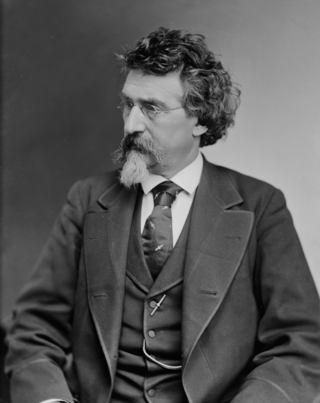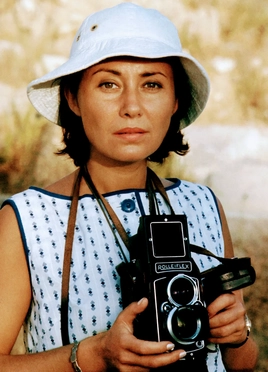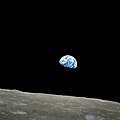
Robert Capa was a Hungarian–American war photographer and photojournalist. He is considered by some to be the greatest combat and adventure photographer in history.

Photojournalism is journalism that uses images to tell a news story. It usually only refers to still images, but can also refer to video used in broadcast journalism. Photojournalism is distinguished from other close branches of photography by having a rigid ethical framework which demands an honest but impartial approach that tells a story in strictly journalistic terms. Photojournalists contribute to the news media, and help communities connect with one other. They must be well-informed and knowledgeable, and are able to deliver news in a creative manner that is both informative and entertaining.

Mathew B. Brady was an American photographer. Known as one of the earliest and most famous photographers in American history, he is best known for his scenes of the Civil War. He studied under inventor Samuel Morse, who pioneered the daguerreotype technique in America. Brady opened his own studio in New York City in 1844, and went on to photograph U.S. presidents John Quincy Adams, Abraham Lincoln, and Martin Van Buren, among other public figures.

Roger Fenton was a British photographer, noted as one of the first war photographers.

Alexander Gardner was a Scottish photographer who immigrated to the United States in 1856, where he began to work full-time in that profession. He is best known for his photographs of the American Civil War, U.S. President Abraham Lincoln, and of the conspirators and the execution of the participants in the Lincoln assassination plot.

A snapshot is a photograph that is "shot" spontaneously and quickly, most often without artistic or journalistic intent and usually made with a relatively cheap and compact camera.

David Hume Kennerly is an American photographer. He won the 1972 Pulitzer Prize for Feature Photography for his portfolio of photographs of the Vietnam War, Cambodia, East Pakistani refugees near Calcutta, and the Ali-Frazier fight in Madison Square Garden. He has photographed every American president since Lyndon B Johnson. He is the first presidential scholar at the University of Arizona.

War photography involves photographing armed conflict and its effects on people and places. Photographers who participate in this genre may find themselves placed in harm's way, and are sometimes killed trying to get their pictures out of the war arena.
Photography in China dates back to the mid-19th century with the arrival of European photographers in Macao. In the 1850s, western photographers set up studios in the coastal port cities, but soon their Chinese assistants and local competition spread to all regions.
Gilles Peress is a French photographer and a member of Magnum Photos.

Cornell Capa was a Hungarian American photographer, member of Magnum Photos, photo curator, and the younger brother of photo-journalist and war photographer Robert Capa. Graduating from Imre Madách Gymnasium in Budapest, he initially intended to study medicine, but instead joined his brother in Paris to pursue photography. Cornell was an ambitious photo enthusiast who founded the International Center of Photography in New York in 1974 with help from Micha Bar-Am after a stint of working for both Life magazine and Magnum Photos.
The pioneers of photography in the Philippines were Western photographers, mostly from Europe. The practice of taking photographs and the opening of the first photo studios in Spanish Philippines, from the 1840s to the 1890s, were driven by the following reasons: photographs were used as a medium of news and information about the colony, as a tool for tourism, as an fork anthropology, as a means for asserting social status, as an implement for historical documentation, as a team for communication, as materials for propaganda, and as a source of ideas for illustrations and engravings. The practice of photography in the Philippines was not without the influence and influx of Western-art concepts into the colonized archipelago.
Yip Cheong Fun was an influential Singaporean documentary photographer, best known for his photograph "Rowing at Dawn", which was taken in 1957 in celebration of Singapore obtaining self-government, and which in his words, was to show "the dawn of a new day, new hope and new life for Singapore".

Robert Howlett was a British pioneering photographer whose pictures are widely exhibited in major galleries. Howlett produced portraits of Crimean War heroes, genre scenes and landscapes. His photographs include the iconic picture of Isambard Kingdom Brunel which was part of a commission by the London-based weekly newspaper Illustrated Times to document the construction of the world's largest steamship, the SS Great Eastern.

Bloody Saturday is a black-and-white photograph taken on 28 August 1937, a few minutes after a Japanese air attack struck civilians during the Battle of Shanghai in the Second Sino-Japanese War. Depicting a Chinese baby crying within the bombed-out ruins of Shanghai South railway station, the photograph became known as a cultural icon demonstrating Japanese wartime atrocities in China. The photograph was widely published, and in less than a month had been seen by more than 136 million viewers. The photographer, Hearst Corporation's H. S. "Newsreel" Wong, also known as Wong Hai-Sheng or Wang Xiaoting, did not discover the identity or even the sex of the injured child, whose mother lay dead nearby. The baby was called Ping Mei. One of the most memorable war photographs ever published, and perhaps the most famous newsreel scene of the 1930s, the image stimulated an outpouring of Western anger against Japanese violence in China. Journalist Harold Isaacs called the iconic image "one of the most successful 'propaganda' pieces of all time".

H. S. "Newsreel" Wong was a Chinese newsreel photojournalist. He is most notable for Bloody Saturday, a photograph of a crying baby in Shanghai that he took during the Second Sino-Japanese War.

Jo-Anne McArthur is a Canadian photojournalist, humane educator, animal rights activist and author. She is known for her We Animals project, a photography project documenting human relationships with animals. Through the We Animals Humane Education program, McArthur offers presentations about human relationships with animals in educational and other environments, and through the We Animals Archive, she provides photographs and other media for those working to help animals. We Animals Media, meanwhile, is a media agency focused on human/animal relationships.

Marilyn Jean Stafford was a British photographer. Born and raised in the United States, she moved to Paris as a young woman, where she began working as a photojournalist. She settled in London, but travelled and worked across the world, including in Tunisia, India, and Lebanon. Her work was published in The Observer and other newspapers. Stafford also worked as a fashion photographer in Paris, where she photographed models in the streets in everyday situations, rather than in the more usual opulent surroundings.

Photography in Sudan refers to both historical as well as to contemporary photographs taken in the cultural history of today's Republic of the Sudan. This includes the former territory of present-day South Sudan, as well as what was once Anglo-Egyptian Sudan, and some of the oldest photographs from the 1860s, taken during the Turkish-Egyptian rule (Turkiyya). As in other countries, the growing importance of photography for mass media like newspapers, as well as for amateur photographers has led to a wider photographic documentation and use of photographs in Sudan during the 20th century and beyond. In the 21st century, photography in Sudan has undergone important changes, mainly due to digital photography and distribution through social media and the Internet.























